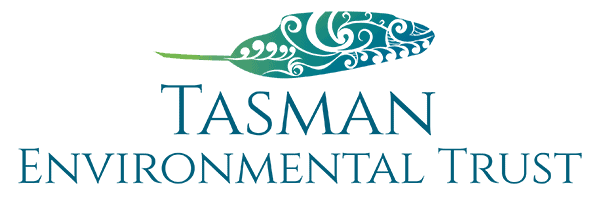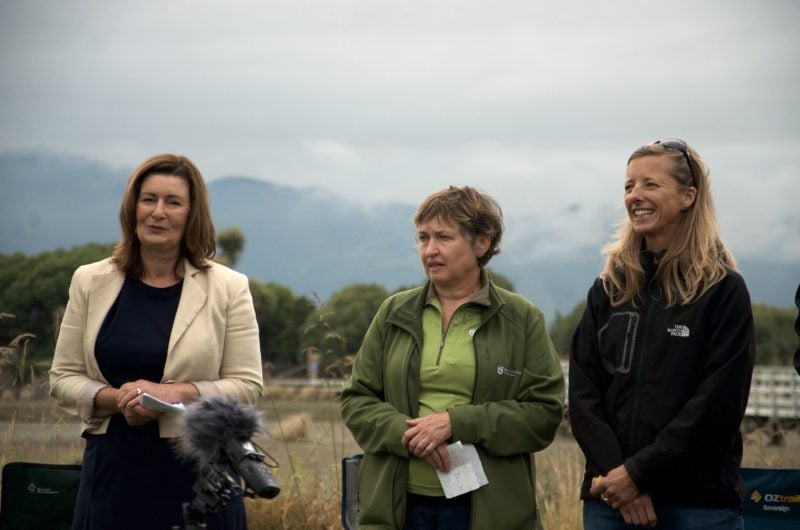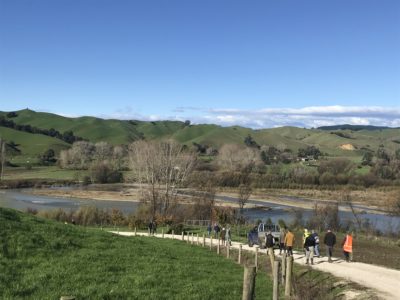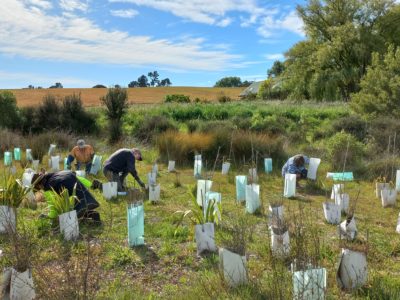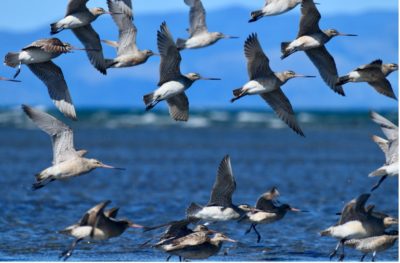TET’s coastal blue carbon project, Core and Restore, launched on 29 November with a dawn celebration on the shores of Waimeha/Waimea Inlet.
The chorus of morning bird call joined with a karakia offered by Ngāti Apa ki te Rā Tō, and enthusiastic words of support from both Mayor Rachel Reese and Helen Kettles, DOC’s national estuaries and blue carbon expert.
The attendees represented the wide range of stakeholders who are supporting the project in various ways, including local businesses, councils, iwi, community groups and the Department of Conservation.
A cross-sector community partnership
Core and Restore is a whole-community collaboration with ambitious plans to measure carbon storage in coastal ecosystems across Te Tau Ihu (the top of the South) and protect and restore these areas. Key partners include the Cawthron Institute, Beca, Ngāti Apa ki te Rā Tō and Nelson City Council.
Our pilot is now under way to prove the concept for the project. Field work in the Waimeha/Waimea Inlet and at Onetahua/Farewell Spit will provide an early indication of how much carbon is stored in saltmarsh and seagrass habitats in our region. The pilot has financial support from Nelson City Council, Pic’s Peanut Butter, Live Ocean, Kidson Investments Ltd and the HealthPost Nature Trust.
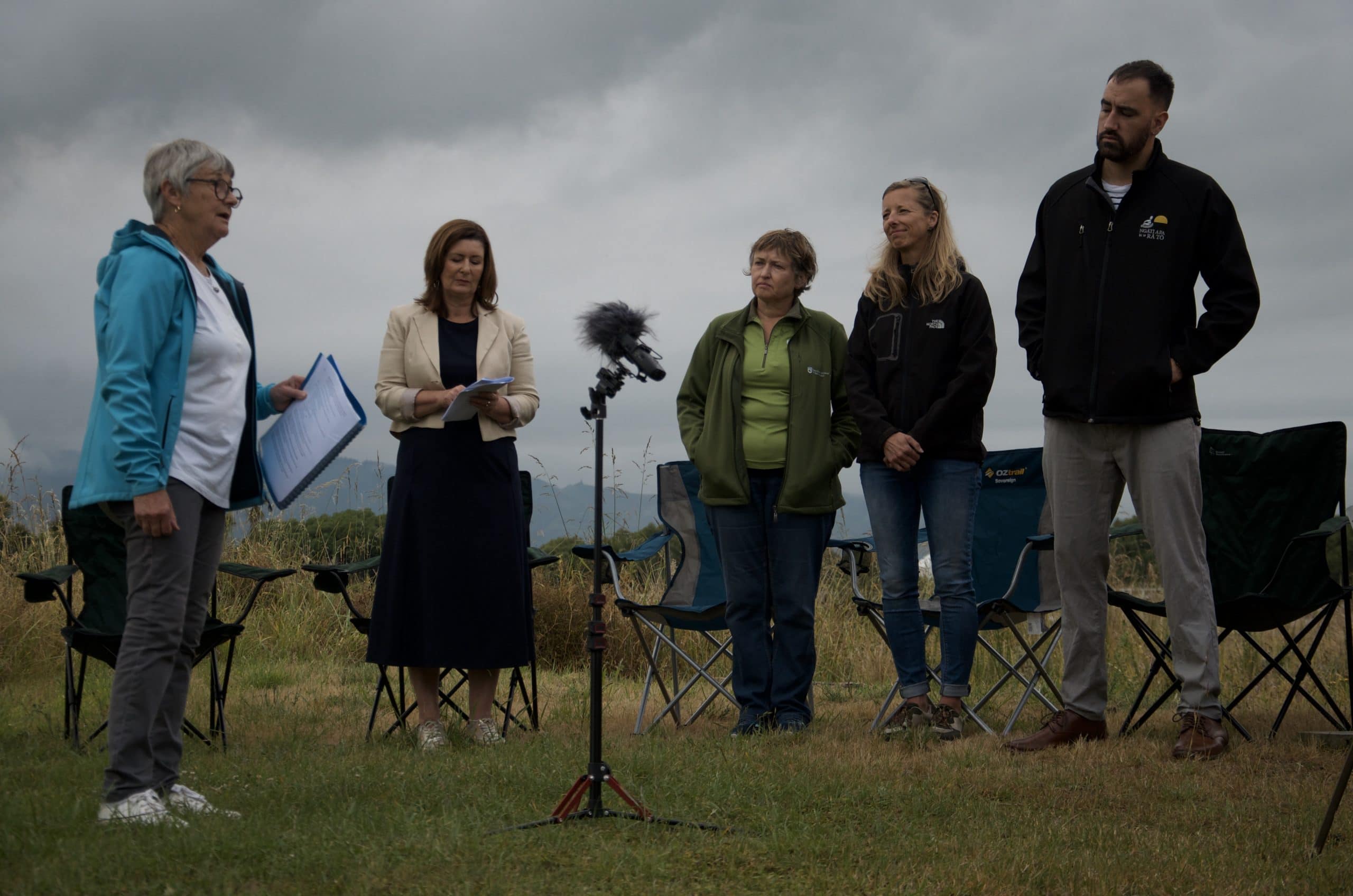
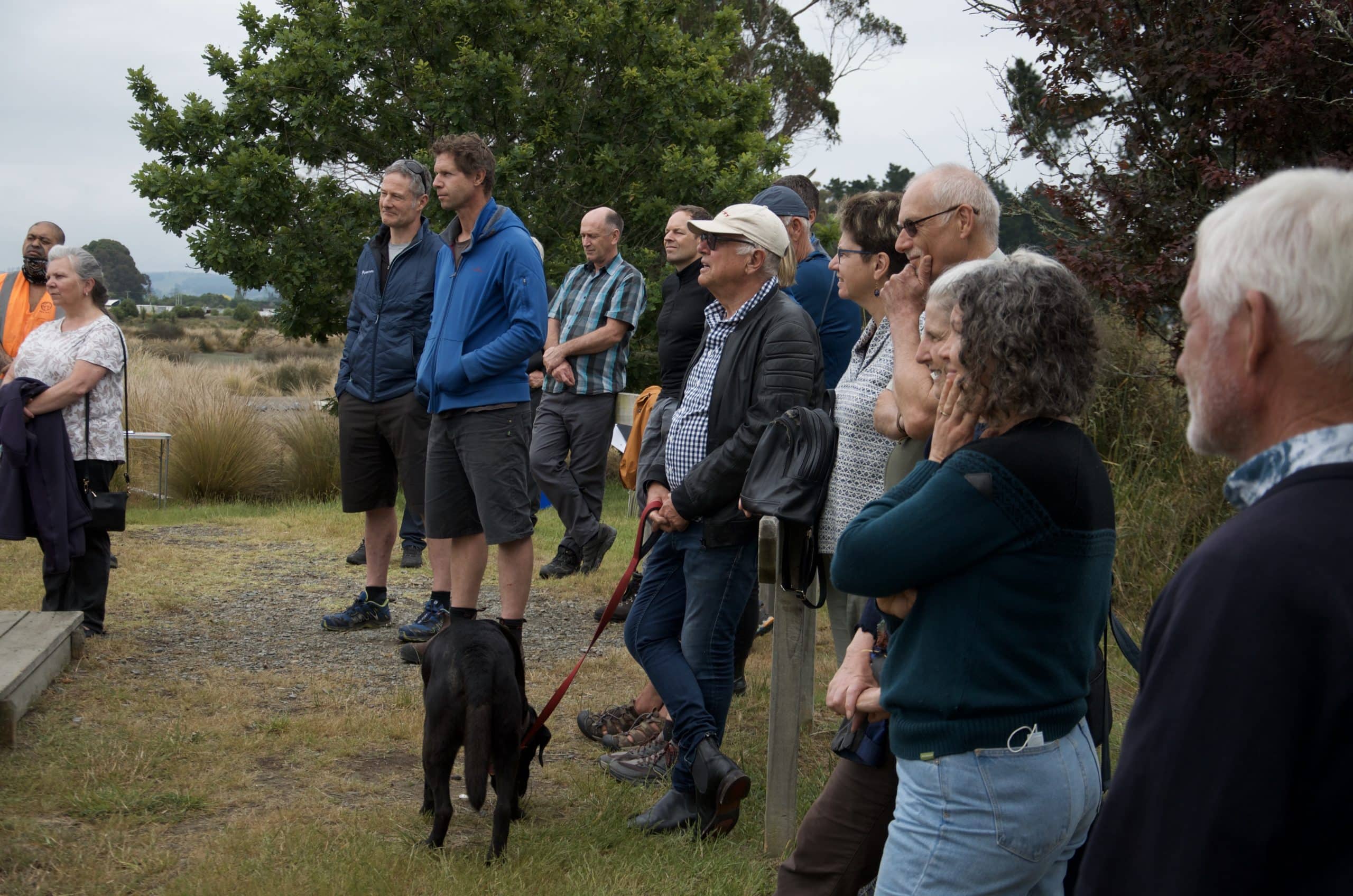
Why blue carbon matters
Blue carbon is the carbon stored in mangroves, salt tidal marshes, and seagrass meadows within the soil, the living biomass aboveground (leaves, branches, stems), the living biomass belowground (roots), and the non-living biomass (e.g., litter and dead wood) (Mcleod et al, 2011).
Carbon stored in coastal soils can remain sequestered in very large quantities for a very long time (centuries to millennia) (Duarte et al., 2005; Lo lacono et al., 2008).
That’s good news for both climate stability and another important reason for us to protect and restore the estuaries of Te Tau Ihu.
What Core and Restore wants to achieve
TET has jumped aboard the current wave of interest in blue carbon, with the project adding a New Zealand contribution to global efforts to preserve coastal blue carbon habitats.
In a recent interview with stuff, project lead Lauren Walker said the aim of the pilot is to “work out what’s the best way we can mobilise communities to understand how much carbon is being stored in their own blue carbon habitats, and then mobilise them to do the restoration work in their own communities.
”International research indicates that coastal blue carbon habitats can store up to ten times as much carbon as an equivalent area of forest,” she said. “We’re interested in getting an initial indication of how much carbon is stored in our local habitats, and where we sit relative to global averages in the range.”
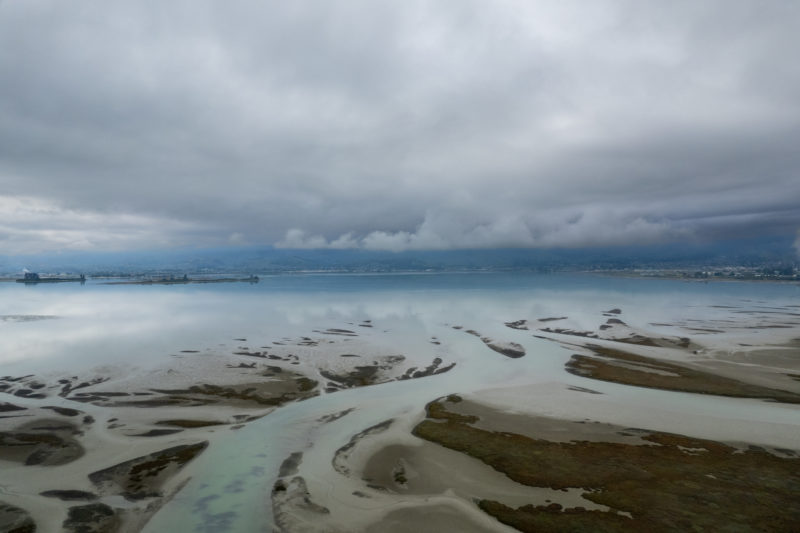
Getting citizen scientists in on the research
Nelson City Council’s “teabag experiment” is part of a global blue carbon citizen science initiative called TeaComposition H2O, where scientists analyse litter decomposition in wetland ecosystems using two specific varieties of household teabags—green and rooibos tea made by Lipton.
The teabag experiment is an important component of the Core & Restore Pilot, because it is a fun way to get the community involved in measuring blue carbon.
Volunteers buried 960 tea bags in Nelson Haven and Waimeha/Waimea Inlet on 30 November and 1 December. These will be dug up and analysed in March, to provide an indication of how well the estuary is sequestering carbon.
Looking ahead
We are looking forward to carrying out field work to measure the amount of carbon stored in the seagrass habitat at Onetahua/Farewell Spit in April. We’re excited that Manawhenua Ki Mohua and the HealthPost Nature Trust will join TET and our key partners to carry out this work.
What happens next for Core and Restore will largely depend on the findings from the pilot. According to the Cawthron Institute, there’s no existing data on soil carbon storage from salt marshes featuring the Waimeha/Waimea Inlet’s dominant plant species: oioi/jointed wire rush and ureure/glasswort—so the science is in uncharted territory.
Project lead Lauren Walker plans to bring a wide range of stakeholders together for another blue carbon hui at the end of the pilot, so that we can collectively understand the findings and co-design the next stage of the project.
To learn more about blue carbon and the Core and Restore project, visit our project page: https://www.tet.org.nz/proj…/blue-carbon-core-and-restore/
REFERENCES
Duarte, C.M., Middelburg, J.J. & Caraco, N. (2005). Major role of marine vegetation on the oceanic carbon cycle. Biogeosciences, 2, 1–8.
Lo Iacono, C., Mateo, M.A., Gràcia, E., Guasch, L., Carbonell, R., Serrano, L. et al. (2008). Very high‐resolution seismo‐acoustic imaging of seagrass meadows (Mediterranean Sea): Implications for carbon sink estimates. Geophysical Research Letters, 35.
Mcleod, E., Chmura, G.L., Bouillon, S., Salm, R., Björk, M., Duarte, C.M. et al. (2011). A blueprint for blue carbon: toward an improved understanding of the role of vegetated coastal habitats in sequestering CO2. Frontiers in Ecology and the Environment, 9, 552–560.
